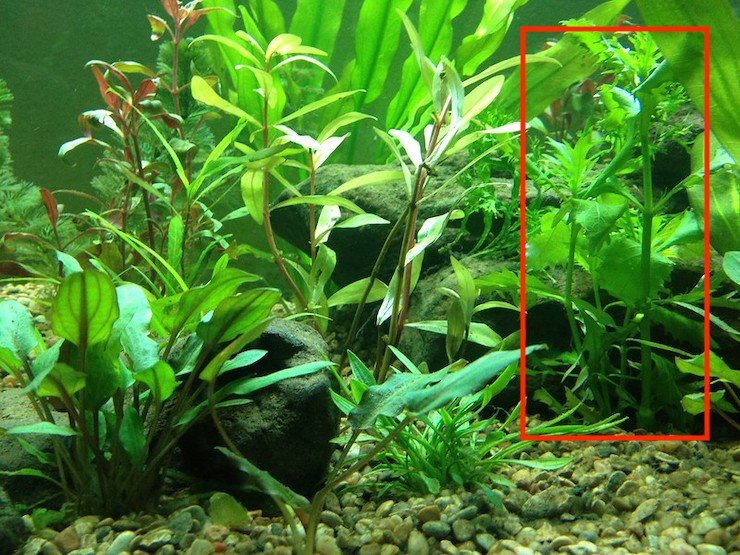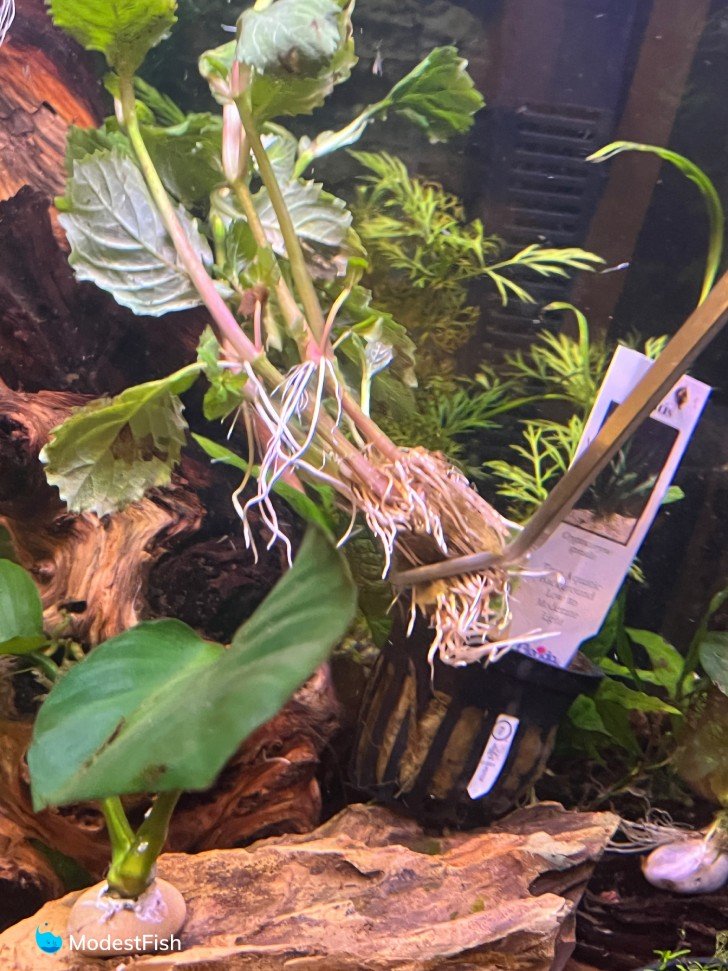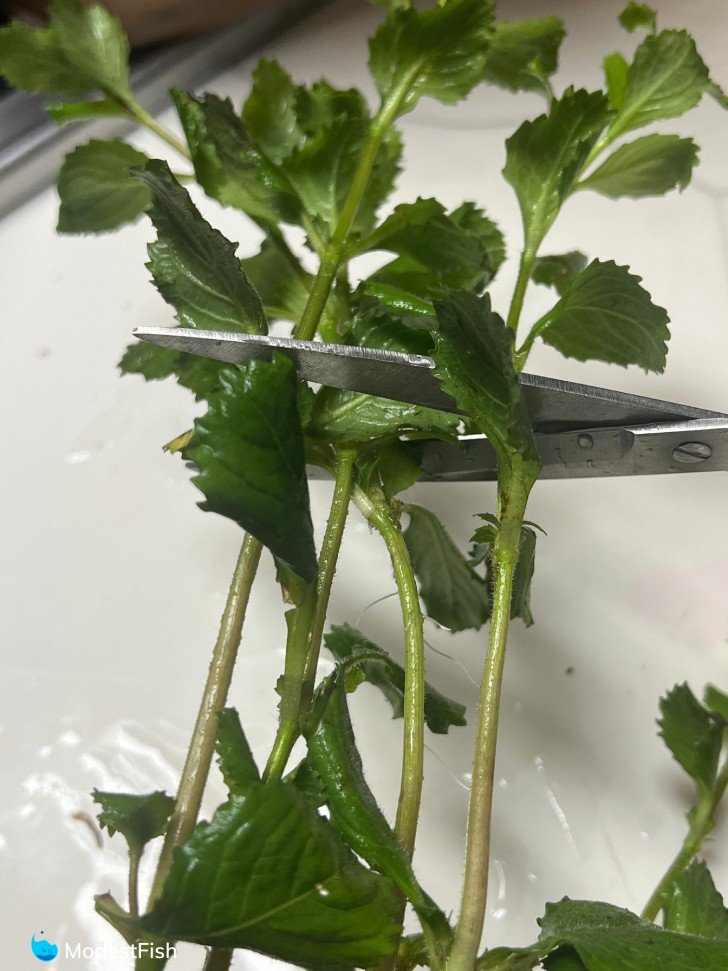Water wisteria (Hygrophila difformis) is an extremely hardy plant native to the Indian Subcontinent, and one I highly recommend for aquarist to keep in their tank.
Making a great hiding place for small fish and invertebrates. As long as you can provide at least medium intensity light, there’s no reason not to give this plant a try.
Here’s all you need to know about keeping and caring for water wisteria in your aquarium.
Water Wisteria Quick Care Stats
- Scientific name: Hygrophila difformis
- Higher classification: Hygrophila
- Family: Acanthaceae
- Maximum height: 20 inches (50 centimeters)
- Growth rate: fast
- Difficulty: easy
- Light demands: medium
- Placement: background
- Temperature: 75°-82°F (24°-28°C)
- Native range: Indian subcontinent
Table of Contents
Water Wisteria (Hygrophila difformis) Origins
This plant is native to freshwater rivers and streams in India, Bhutan, Bangladesh and Nepal.
It grows along riverbanks and can live as either a fully aquatic plant, or with the top part of the plant growing out of the water.
Water Wisteria Aquarium Requirements

This species of plant is extremely hardy and is capable of adapting to a wide variety of tank conditions.
Lighting
Water wisteria loves bright light. It will do best under medium to high lighting (PAR 50-80).
Water Parameters
- pH: 6.5-7.5
- GH: 3-19 dGH
- KH: 3-8 dKH
Fertilizer and CO2
Adding a comprehensive plant fertilizer to your water weekly will help your water wisteria grow thick and lush.
This species feeds primarily from the water column and not through its roots. So, you don’t need to bury root tabs in the substrate. And it doesn’t matter which type of substrate you use.

Last update on 2024-04-14 / Commissions Earned / Images from Amazon Product Advertising API
Water wisteria can easily be grown without adding compressed CO2 to your tank. But of course, like most plants, it will grow much faster in a tank with CO2.
But honestly, this stuff already grows pretty darn fast. There’s no need to make an expensive upgrade on your tank just for water wisteria, believe me.
Pro Tip: This plant can help keep your aquarium water clean because it eats up nitrate from the water column to fuel its growth.
Growth Rate & Size
This is a really fast growing plant. Even without CO2, water wisteria will grow rapidly to a maximum size of 20 inches (50 centimeters).
How to Plant Water Wisteria

There are two ways to keep this plant in your tank.
You can bury the stems of the plant in the substrate. Over time it will grow roots and anchor itself in place.
The other option is to simply grow your water wisteria as a floating plant. It will do best in a calm area where it is not being churned by a strong current.
Propagating Water Wisteria
This plant is propagated by cutting. Simply cut a piece off the top of the plant, leaving several sets of leaves on the old plant.

The cuttings can be buried in the substrate or allowed to grow as a floating plant.
Algae Control
Older growth on this plant can be the target of algae that can cover the broad surfaces of the leaves.
A clean up crew in your tank, like nerite snails or otocinclus catfish, can help you keep the leaves clear of algae.
You can also spot treat leaves using a dosing syringe and Seachem Excel.
Pro Tip: The active ingredient in Excel, glutaraldehyde, is a powerful algaecide. It will readily kill even some of the most stubborn algaes, like black beard and staghorn algae, when it’s applied directly.

Last update on 2024-04-14 / Commissions Earned / Images from Amazon Product Advertising API
Is Water Wisteria Right For You?
I highly recommend this plant. Water wisteria is tough and fairly easy to take care of.
It makes a great hiding place for small fish and invertebrates. As long as you can provide at least medium intensity light, there’s no reason not to give this plant a try.
It’s bright green color and attractive leaf shape make it very appealing as a background plant. And its ability to draw nitrate from the water column makes it a desirable addition to any aquarium.
I hope you find this information helpful.
I wish you and your plants the best of luck.
